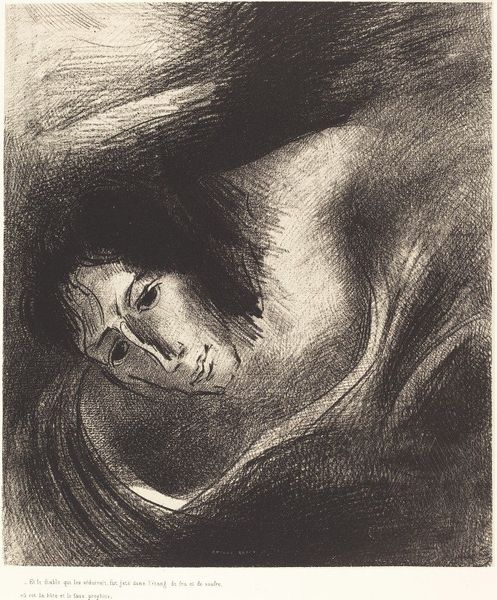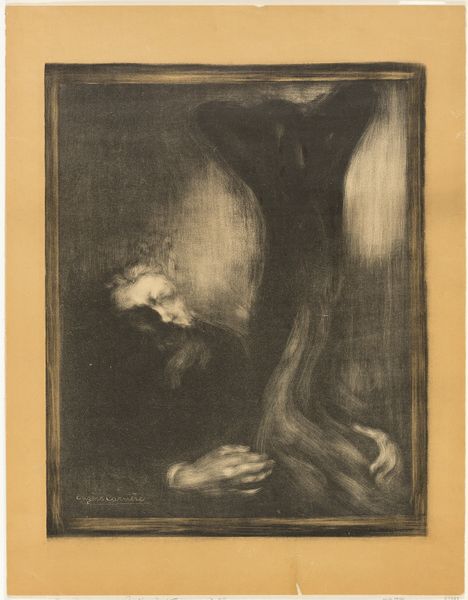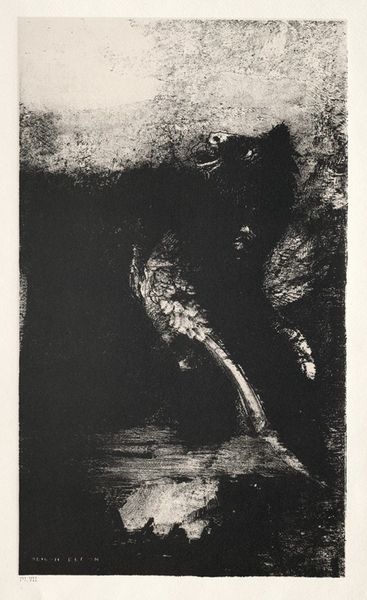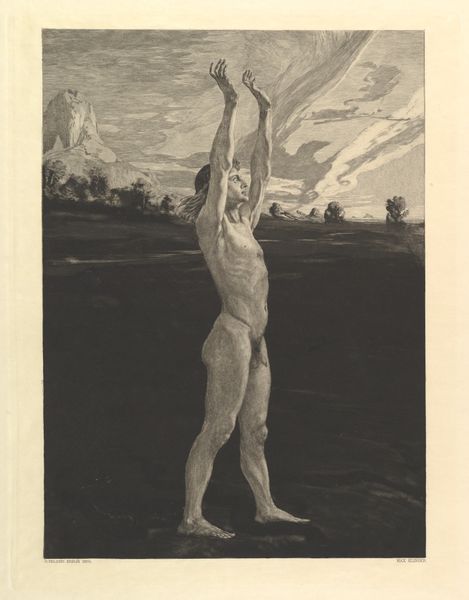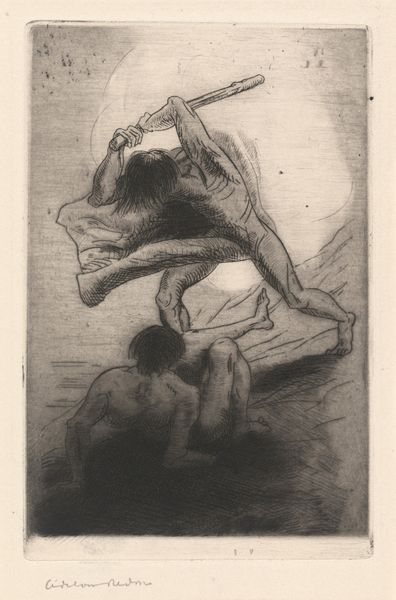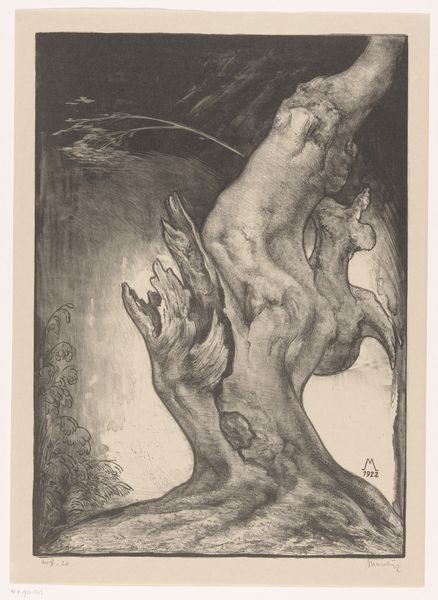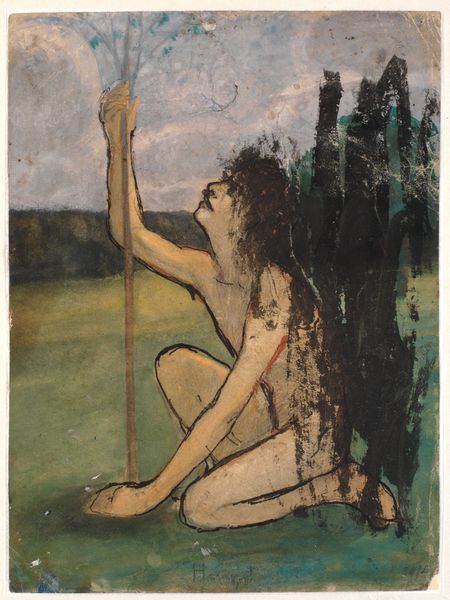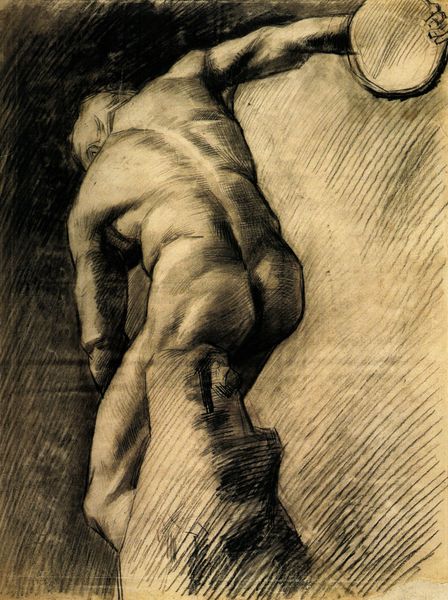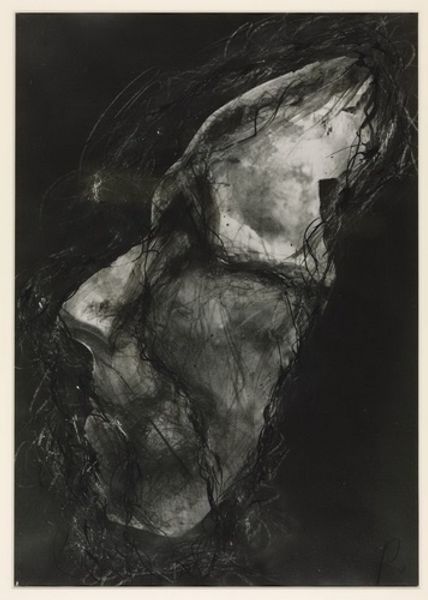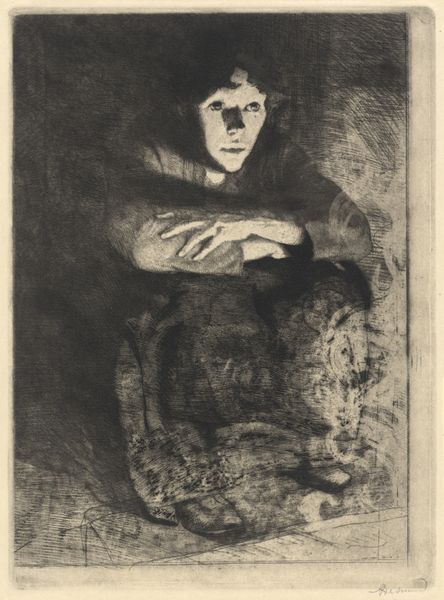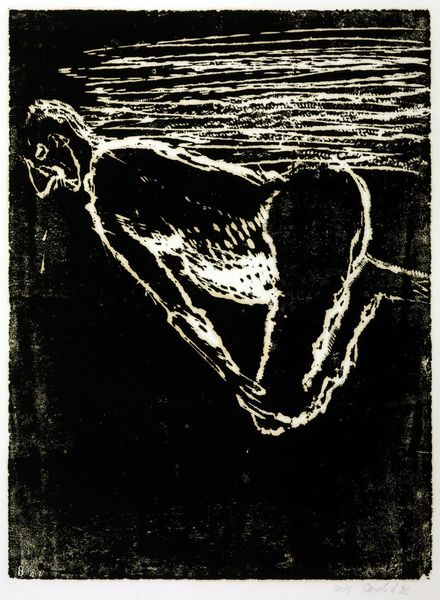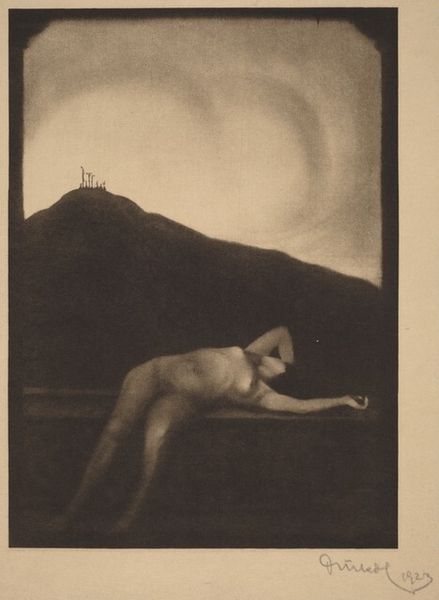
#
charcoal drawing
#
possibly oil pastel
#
charcoal art
#
oil painting
#
roman-mythology
#
acrylic on canvas
#
underpainting
#
mythology
#
animal drawing portrait
#
surrealist
#
charcoal
#
watercolor
Dimensions: 28.5 x 21 cm
Copyright: Public domain
This print, "Colossus," was created by Francisco de Goya using etching and aquatint. These are both intaglio processes, meaning that the image is incised into a metal plate, which then holds ink. It's a method ideally suited to Goya's dark vision. Look closely, and you’ll see the rich tonalities he achieved. These are the direct result of the time he invested manipulating acid and metal. Aquatint, in particular, allows for subtle gradations and deep shadows by using a porous ground of resin, which, when bitten by acid, creates a rough surface that holds ink. Notice the imposing figure of the giant, looming over a fleeing crowd. The aquatint gives his form a monumental presence, its texture suggesting immense power. Goya's choice of printmaking was significant. As a repeatable medium, it allowed for wider distribution of his critique of war and society. This wasn't just about aesthetics; it was about disseminating ideas, using craft as a tool for social commentary.
Comments
No comments
Be the first to comment and join the conversation on the ultimate creative platform.
